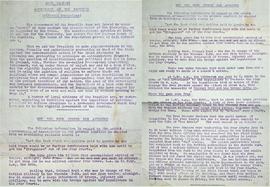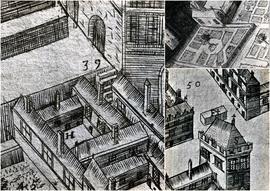Official Communiqués from Republican Ministers
- IE CA IR-1/8/3/13
- File
- 1922-1923
Part of Irish Capuchin Archives
Official Communiqués from Republican Ministers including Éamon de Valera, President; Austin Stack, Minister for Finance; Padraig Ó Ruitleis, Minister for Home Affairs. These typescript duplicates of communiqués were published by the publicity department of the Anti-Treaty ‘Dail Eireann’ Republican Government. Includes Statement on ‘Why the Four Courts was Attacked’; Statements for publication regarding the trial of Capt. Erskine Childers in November 1922; Statement regarding the treatment of Joseph Clarke by Free State authorities. Clarke acted as the courier for the First Dáil but was interned from January 1921. Released in 1923, he acted as caretaker of the Sinn Féin headquarters on Harcourt Street, and founded the Irish Book Bureau. Although the Anti-Treaty Sinn Féin rejected participation in the Dáil, they continued to contest local elections, and Clarke sat on Dublin Corporation. (13 Nov. 1922); Proclamation by Liam Lynch, Chief of Staff of the IRA, declaring allegiance to De Valera as President of the Republic and pledging ‘our support in all the legitimate efforts to maintain and defend the Republic …’. 3 copies. (28 Oct. 1922); Order from Padraig Ó Ruitleis, Minister for Home Affairs, decreeing ‘that until further notice the present be observed as a time of National mourning, that all sports and amusements be suspended, that all Theatres, picture houses and other places of amusement and rest be closed …’. (13 Mar. 1923); ‘Cease Fire Order’ issued by Éamon de Valera on 27 April 1923: ‘As evidence of our good-will, the Army Council [of the IRA] is issuing herewith an Order to all Units to suspend aggressive action – the order to take effect as soon as may be, but not later than noon Monday, April 30th’. With blank nomination form used by Republican candidates in the parliamentary elections for the Third Dáil Eireann held on 16 June 1922. Printed by Browne & Nolan, Ltd., Printers, Dublin.





